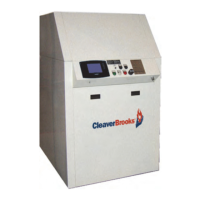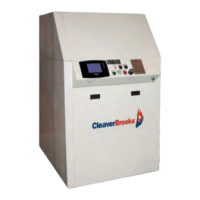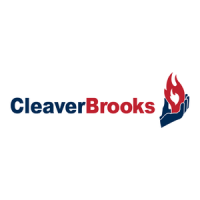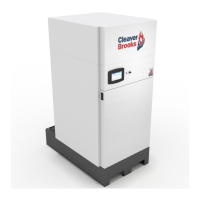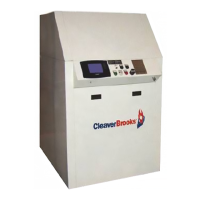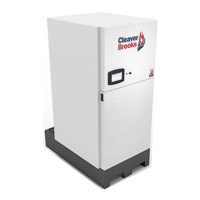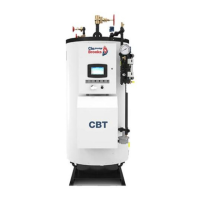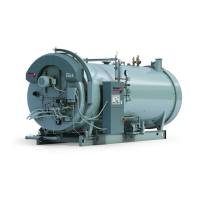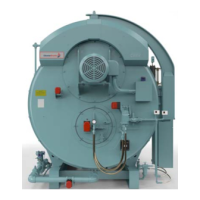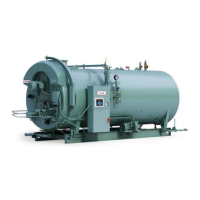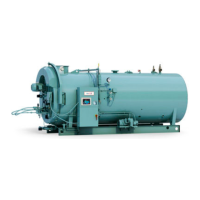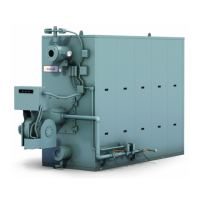Section 2 — Installation
2-12 Part No. 750-263
D. USING GLYCOL
The Model CFC boiler may be operated with a solution of glycol and
water. Where glycols are added, the system must first be cleaned
and flushed. Correct glycol selection and regular monitoring of the
in-use concentration and its stability is essential to ensure
adequate, long-term freeze protection, including protection from the
effects of glycol-derived corrosion resulting from glycol degradation.
Typically, ethylene glycol is used for freeze protection, but other
alternatives exist, such as propylene glycol. Glycol reduces the
water-side heat capacity (lower specific heat than 100% water) and
can reduce the effective heat transfer to the system. Because of
this, design flow rates and pump selections should be sized with
this in mind.
Generally, corrosion inhibitors are added to glycol systems.
However, all glycols tend to oxidize over time in the presence of
oxygen, and when heated, form aldehydes, acids, and other
oxidation products. Whenever inadequate levels of water treatment
buffers and corrosion inhibitors are used, the resulting water glycol
mixture pH may be reduced to below 7.0 (frequently reaching 5)
and acid corrosion results. Thus, when pH levels drop below 7.0
due to glycol degradation the only alternative is to drain, flush,
repassivate, and refill with a new inhibited glycol solution.
The following recommendations should be adhered to in applying
ClearFire model CFC boilers to hydronic systems using glycol:
1) Maximum allowable antifreeze proportion (volume %):
50% antifreeze (glycol)
50% water
2) The glycol concentration determines the maximum allowable firing
rate and output of the boiler(s). Please refer to the firing rate
limitation and corresponding high fire speed settings vs. glycol %
in the charts below.
3) Maximum allowable boiler outlet/supply temperature: 185 deg F
(85 deg C).
4) Minimum water circulation through the boiler:
a) The minimum water circulation must be defined in such a
way that the temperature difference between the boiler
outlet/supply and inlet/return is a maximum of 40 deg F
(22 deg C), defined as DT (Delta T). A DT Limit algorithm
should be enabled in the boiler controller.
b) Independent from the hydraulics of the heating system,
constant water circulation through each boiler is required.
(Requires a dedicated boiler pump if in a primary/
Table 2-2 Model CFC Water Temperature Data (Non-Glycol)
Minimum supply temp. 33
o
F
Maximum operating temp. 194
o
F
Maximum design temp. 210
o
F
